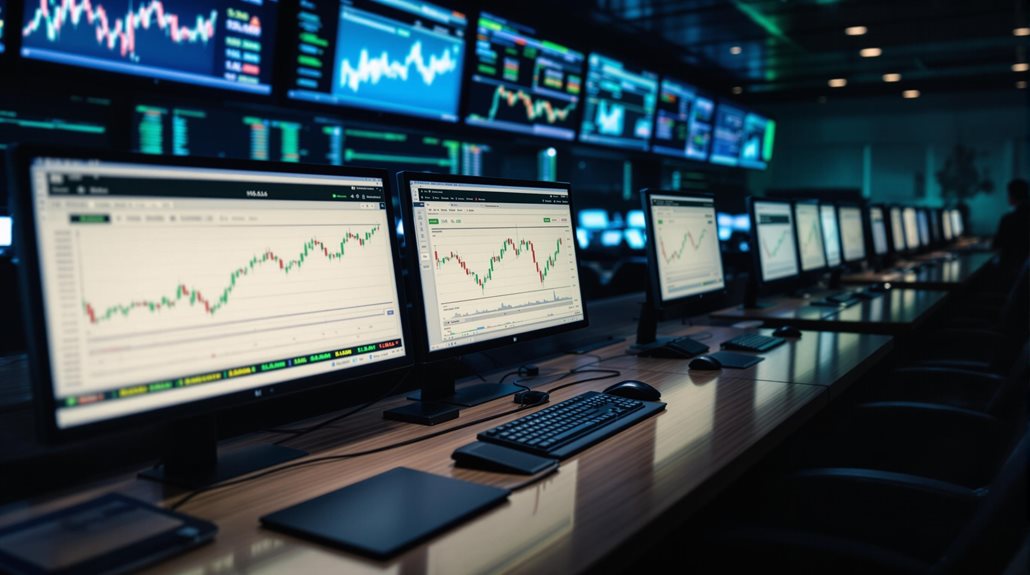ETF stands for Exchange-Traded Fund. It's a type of investment that works like a basket filled with different stocks, bonds, or other assets. ETFs trade on stock exchanges just like regular company shares, letting investors buy and sell them throughout the trading day. They're designed to track specific market indices or sectors, making them a popular way to invest in multiple securities at once. Understanding ETFs opens up a world of investment possibilities.

ETF stands for Exchange-Traded Fund, a popular investment product that trades on stock exchanges like regular stocks. It's a type of investment fund that holds a collection of different investments, such as stocks, bonds, or commodities. ETFs are designed to track the performance of specific market indices, sectors, or assets, making them a convenient way for investors to gain exposure to various markets.
These investment vehicles combine features from both mutual funds and individual stocks. Like mutual funds, ETFs offer investors a way to own a diverse mix of investments through a single purchase. Shareholders of ETFs are entitled to receive any interest and dividends earned by the fund's holdings. However, unlike mutual funds that trade once per day after the market closes, ETFs can be bought and sold throughout the trading day at prices that change based on supply and demand.
One of ETF's notable features is their typically lower costs compared to traditional mutual funds. They often have lower expense ratios, which means investors keep more of their returns. The SPDR S&P 500 ETF was the first U.S. ETF ever launched. ETFs also offer high liquidity, meaning they're easy to buy and sell quickly, and they provide clear transparency about what investments they hold. Most ETFs are passively managed to track specific indices rather than relying on active management strategies.
There are several different types of ETFs available in the market. Stock ETFs track specific stock market indices or sectors, while bond ETFs focus on fixed-income securities. Commodity ETFs follow the prices of raw materials like gold, oil, or agricultural products. Sector ETFs concentrate on specific industries such as technology, healthcare, or finance. There are also specialty ETFs that follow particular investment strategies or themes.
ETFs offer several benefits that have contributed to their growing popularity. They provide diversification by spreading investments across multiple securities, which can help reduce risk compared to investing in individual stocks. They're accessible to both small and large investors, as they can be purchased for the price of a single share.
The tax efficiency of ETFs is another advantage, as they typically generate fewer taxable events compared to actively managed mutual funds.
The structure of ETFs uses a unique creation and redemption process that helps keep their trading price close to the value of their underlying assets. This process, known as in-kind creation and redemption, allows large institutions to exchange ETF shares for the actual securities they represent, helping to maintain accurate pricing throughout the trading day.
ETFs have revolutionized investing by offering a flexible, cost-effective way to access various markets and investment strategies. Their combination of features from both stocks and mutual funds has made them an increasingly popular choice for investors seeking diversified market exposure.
Frequently Asked Questions
What Are the Risks Associated With Investing in ETFS?
ETFs face several key risks.
Market risk means their value can go up or down with the broader market.
When an ETF focuses on just one sector or region, it has concentration risk, making it more volatile.
There's also liquidity risk, where it might be hard to buy or sell shares quickly during tough market times.
Synthetic ETFs, which use derivatives, have counterparty risk if the issuer has financial problems.
How Do I Choose the Right ETF for My Investment Portfolio?
When picking ETFs, investors typically start by looking at their financial goals and how much risk they're comfortable with.
They'll check the ETF's focus, like whether it tracks stocks or bonds, and look at things like fees and how easy it is to buy and sell.
Many investors also examine the ETF's past performance and the reputation of the company managing it.
The process often involves comparing similar ETFs to find the best fit.
What Is the Minimum Amount Needed to Invest in ETFS?
The minimum amount needed to invest in ETFs is typically just the cost of one share. Share prices can range from around $50 to several hundred dollars.
There's no set dollar minimum like mutual funds often require. Many brokers now offer fractional shares, letting people start with as little as $1 or $5.
Plus, lots of brokers don't charge commissions for ETF trades, making it even more budget-friendly to begin investing.
Are ETFS Better Investment Options Than Mutual Funds?
ETFs and mutual funds each have their own advantages.
ETFs typically have lower costs, more trading flexibility, and better tax efficiency. They're traded like stocks throughout the day and usually have no minimum investment requirements.
However, mutual funds can be beneficial for automatic investment plans and dollar-cost averaging.
Both options provide diversification and professional management.
The better choice depends on individual investment goals and circumstances.
How Often Can I Buy and Sell ETFS During Trading Hours?
ETFs can be bought and sold as many times as desired during regular market hours, which run from 9:30 AM to 4:00 PM Eastern Time.
There aren't any built-in trading restrictions, and trades happen almost instantly, just like stocks.
Some ETFs can also be traded before and after regular market hours.
While there's no limit on the number of trades, some brokers might have their own trading policies or restrictions.





